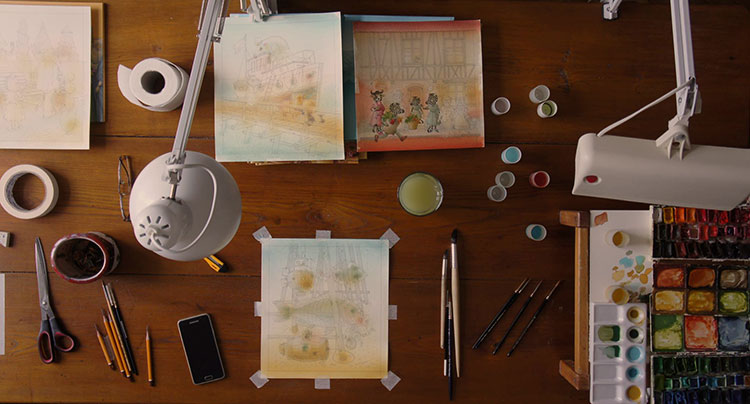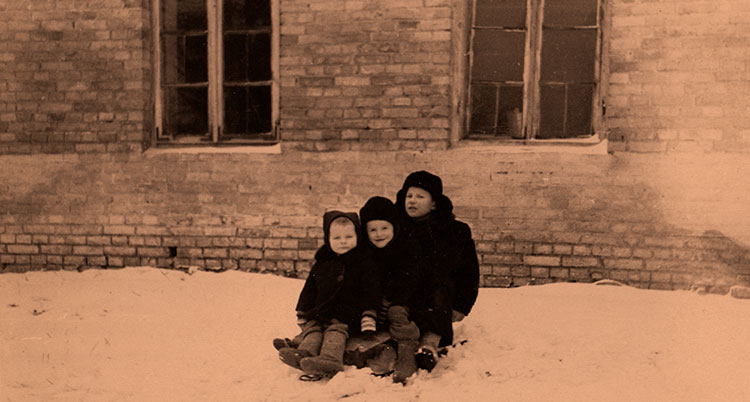Cosul de cumparaturi e gol
Kęstutis Kasparavičius Interview (Part One)
About childhood, writing books and illustrate them with one of the successful children's book authors in the world: Kęstutis Kasparavičius from Lithuania.
1. When you were a child, what did you want to be when you grew up?
I don’t remember all the different professions I wanted to have as a child. But here are some of them: sea captain, jet pilot, ice cream man and even electrician. What I do remember for sure is that I didn’t want to be a children’s book illustrator or writer.
2.What were your favourite books when you were a child? Is there a certain book you still look up to today?
When I was a child I read a lot of books. Very different books. Actually, it was all the books I could find in the little library of our elementary school. Of course at that time there weren’t many children’s books to choose from, compared to nowadays. However, I could always find something interesting for me. I can tell you for certain that my favourite book was Winnie the Pooh by A.A. Milne. I loved it in the past, when I was child, then during my student years and it is still one of my favourite books. And I really like Pinocchio by Carlo Collodi, too. By the way, it is the only book I illustrated twice (drew totally different illustrations each time).
3. What inspired you to become an illustrator? When did you discover your talent? How did you start to also write the text for your illustrations? What’s more difficult – to write the book or to illustrate it? Which do you prefer?
My path towards the book world was pretty winding. I was born in a small village near the town of Aukštadvaris (Lithuania). There was an abandoned manor house nearby, which hosted an elementary school, where both my parents worked as teachers. My family lived right there, in the same manor house. We were surrounded by a unique atmosphere – a lake, an old park on the peninsula, alleys of linden and birch trees. This was really a fabulous place, full of mystery and magic. It was the ‘60s, the grey and gloomy times of the Soviet era, but I had found there my true fairy island. And now I can only feel gratitude for every single moment I spent in that amazing place. So I’m absolutely sure my path to be an illustrator and children’s books writer started right there. Later I studied music for ten years (choir conducting class) at Vilnius M.K. Čiurlionis art school. At school I liked playing the piano and singing, but I wasn’t very fond of conducting. I was a shy boy and felt very uncomfortable standing in front of large crowds. I suffered from terrible stage fright as well. I didn’t understand at the time that I’m an introvert. I just felt I should find another way for me. So after I failed as a choir conductor, I realized that being an artist was exactly what I needed. Then I decided to follow my elder brother and started studies at the Vilnius Art Academy. In Soviet times, the children’s books’ field was a free enough world, free of censorship, propaganda and all those ideological nonsense. So I dived into this world without thinking twice. For many years I worked as a simple book illustrator and only started writing the texts myself 15 years ago. I had illustrated mostly classics authors, like H.Ch. Andersen, E.T.A. Hoffmann, C. Collodi, even F. Dostoyevsky and of course some modern authors as well. But I eventually grew a little tired and bored of working with such serious classical texts, and I felt ready for a change. It was at that very moment that I received an offer from a publishing house from Taiwan, Grimm Press. Between 1994 and 2002 I had already illustrated four books for them. In 2002 Grimm Press was publishing a book for charity, intended for children victims of the earthquake. Artists from all over the world were invited to send an illustration, accompanied by a short text of their own. This is how I created my very first short story, A Songman. Soon afterwards I received another letter from this publisher, saying they liked my story and thought it was very funny. Perhaps I had more of them, to make up a small book? I thought they had in mind a really small book, of some 10 or 12 stories, so I agreed without thinking, despite of the fact that at the time I only had one single story ready, A Songman. I immediately started working, but it soon became clear that I needed many more stories to create a book of a suitable size. First I was a little afraid but then I mobilised the creative powers of my entire family, my wife, four children and even my dog. The text was ready in one month. And it was the fastest book I have ever written myself. Then I asked one of my friends to translate it into English and sent it to the publisher. I must say I had an uneasy feeling and I would have never dared to offer those stories to any publishing house in Lithuania. My only consolation was that Taiwan was on the other end of the world and, if it came to the worst, nobody would know about my literary failure. To my greatest surprise, the editor liked my short stories, so I sat down and drew illustrations for them. This is how my short stories appeared in Chinese. You may think it’s strange that my book first appeared in Chinese rather than my native Lithuanian language. But I think it’s OK. I’ve always liked strange and extraordinary situations, especially since no more than a year later, those stories were published in Lithuanian, and in many other languages afterwards.
4. Could you please tell us a little about the illustration process? Are your illustrations watercolour paintings, on regular canvas? Or do you use a digital tablet?
My favourite technique is watercolour on paper. It’s a very traditional and old technique, so there’s really not much to tell about it. The watercolour technique may seem a bit complicated in the beginning, but once you acquire some skills it becomes really easy, fun even. Besides I really love all the new technologies and innovations. I use computer programs only during sketching stage to make this process a little faster. And for communication things as well.
5. What does your day look like? Do you work every day according to a certain schedule?
I’ve been a freelance artist since 1986, so I’ve been managing my own time for more than 30 years. Some of my colleagues constantly complain about how hard it is to make your own schedule when you don’t have a strict boss by your side. I agree that sometimes it can be quite difficult and sometimes you just have to force yourself a little bit. On the other hand, it’s a great advantage to have the freedom to manage your time however you want. My everyday schedule is very straightforward: I wake up at 7am and start working at 9am. I’m a real early bird and I don’t like working late. So I always try to finish everything for the day by 6pm. After dinner I go for my daily evening walk. I live in the old town of Vilnius and I really like walking around my beloved narrow streets of the old town. It helps me relax and clear my head after a long day. And the most important is that many of my stories and ideas come to my mind exactly during those walks. Sometimes, after work, I go to concerts. I’m a really big fan of classical music: especially Renaissance and early Baroque.
- Accesări: 3885






